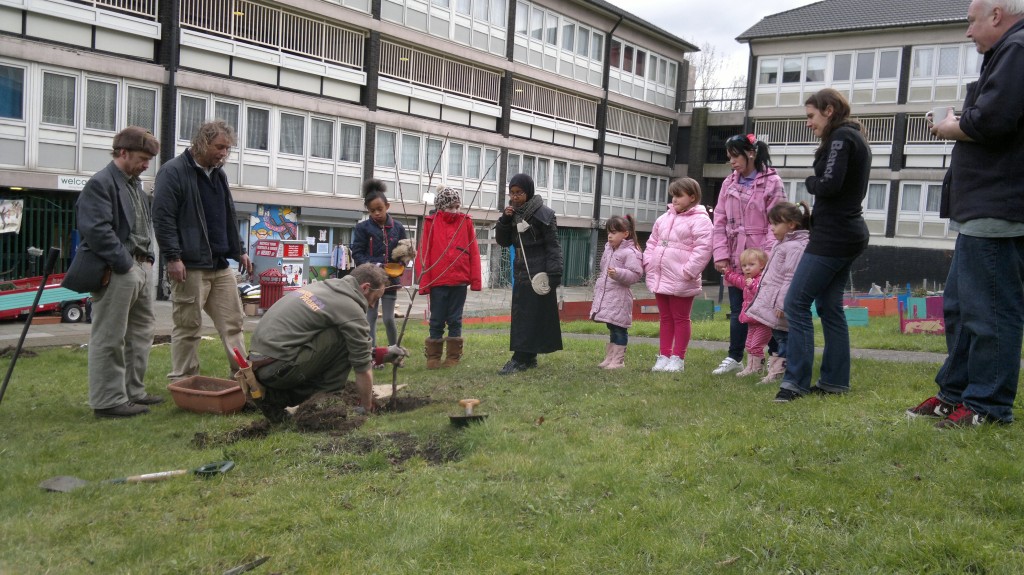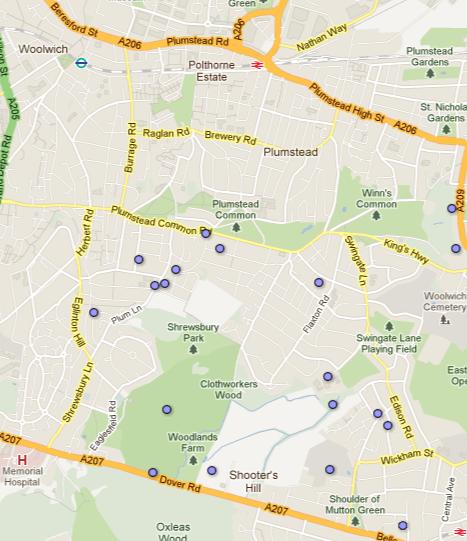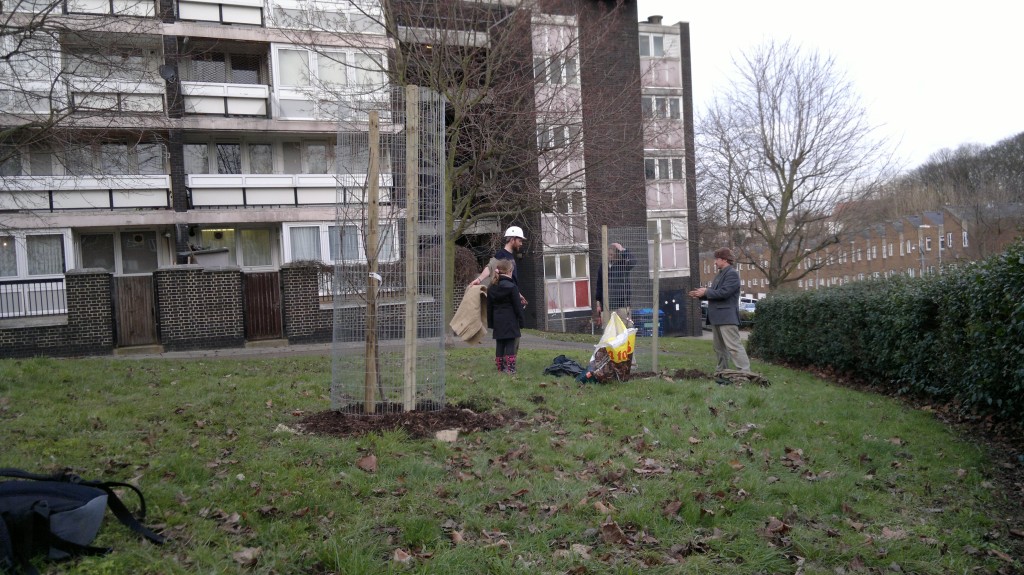
One of the delights of the Memorial Hospital is the stained glass that decorates some of its corridors and stairways, and the St Nicholas Chapel. I was lucky recently to have the opportunity to take some photographs of the windows, which I have put on the flickr site. Most of the topics depicted in the windows need no explanation; a view of Eltham Palace, Henry VIII’s Great Harry ship which was built at Woolwich and the religious subjects in the chapel. However I found one window, shown above, puzzling. Who was William Fisher, I pondered, and what was his connection with the area?
Google wasn’t my friend on this occasion, and couldn’t answer my questions. So I headed down to the local history section of the Woolwich library and the trusty W.T. Vincent’s “The Records of the Woolwich District”. Vincent talks about the visit of Queen Bess to Plumstead in July 1573, but names her host as Thomas Fisher rather than William. He describes Thomas Fisher as having been a clerk or bailiff who was employed by Sir Edward Boughton in the management of the king’s estates, Sir Edward having been granted “the manor and parsonage, tythes &c., within the parishes of and villages of Plumstead, Bostall, Wickham, Welling, Woolwich, Bexley, Lessness, Erith and Yard, alias Crayford” by Henry VIII after the dissolution of the monasteries. Vincent goes on to say of Thomas Fisher:
The old historian, Dugdale, represents Fisher as being:
“As greedy of church lands as other courtiers were,”: observing that “he swallowed divers large morsels, whereof Bishop’s Itchington was one; he made an absolute depopulation of that part called Nether Itchington, where the church stood (which he also pulled down for the building of a manor house in its room); and to perpetuate his memory changed the name of it to Fisher’s Itchington”
He also had a manor house in Plumstead , and much of the land in the parish which had been seized by the late King Henry had apparently come to his share. He was pretty well to do, and on the occasion of the royal visit he presented her Majesty with a ball of gold, with a cover, having a lion standing on the top, crowned and holding the Queen’s arms.
Vincent thought that Fisher’s home was the Old Manor House in Wickham Lane, also known as the Pilgrim’s House or Wolsey’s House.
A Google search for “Fisher’s Itchington” threw up Thomas Fisher MP, who according to wikipedia was MP for Warwickshire and was the person who depopulated Nether Itchington, but no connection with Plumstead or Woolwich is mentioned. So a partial solution to the mystery ….
Gold connections continue in some of the other stained glass windows at the hospital.
The Henry Grace à Dieu, also known as the Great Harry, was the first ship built at Woolwich Dockyard, and the reason the dockyard was founded by Henry VIII in 1512. It was the largest ship of its time, with many innovations such as having two fully armed gun decks, gun ports and 21 of the new heavy bronze cannon. As the window says: she conveyed Henry to the summit with King Francis I of France at the Field of the Cloth of Gold and ended her life at the start of Mary’s reign in 1553, when she caught fire and sank at her mooring at Woolwich… “by neckclygens and for lake of over-syth,” according to Henry Machyn.

The peaceful St Nicholas chapel at the Memorial Hospital opened in 1986 after the closure of the St Nicholas Hospital that was situated in Tewson Road, Plumstead. One of the windows in the chapel is known as the Golden Window, and illustrates the text “Suffer little children to come unto me”. According to the Lost Hospitals of London web site:
The ‘Golden Window’ was originally installed in 1956 in the Hospital chapel at Goldie Leigh Hospital. It was moved to the Memorial Hospital chapel and rededicated in December 1986.
That was all I could find out about this window, but I’ll add it to my list for the next time I’m in the library at the Heritage Centre.
What a range of interesting local history was encapsulated in just three windows!


























